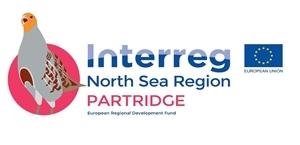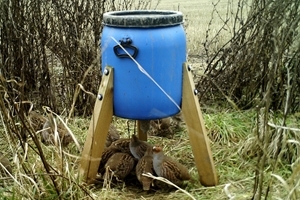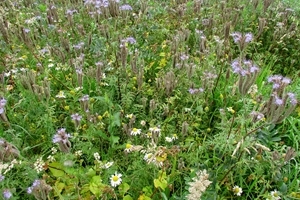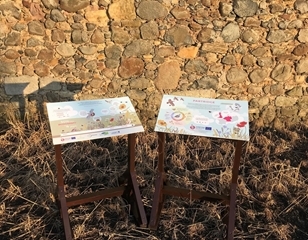 The GWCT is leading on an important demonstration project in Scotland, England, the Netherlands, Belgium and Germany. Supported by the EU via the Interreg North Sea Region programme, the PARTRIDGE project aims to demonstrate how farmland biodiversity can benefit from measures developed for the grey partridge (a key umbrella species of farmland ecosystems) and consequently how agri-environment schemes can be improved across the region to better facilitate increases in farmland wildlife.
The GWCT is leading on an important demonstration project in Scotland, England, the Netherlands, Belgium and Germany. Supported by the EU via the Interreg North Sea Region programme, the PARTRIDGE project aims to demonstrate how farmland biodiversity can benefit from measures developed for the grey partridge (a key umbrella species of farmland ecosystems) and consequently how agri-environment schemes can be improved across the region to better facilitate increases in farmland wildlife.
 In each country there are two demonstration sites of around 500ha. In Scotland, these are Whitburgh Farms in Midlothian and Balgonie Estate in Fife – both sites already carrying out some work to encourage grey partridge. All of the demonstration site teams have been working to increase the area of grey partridge habitats to at least 7% (around 35ha) of the total area – this is currently thought to be the area necessary for grey partridges to thrive.
In each country there are two demonstration sites of around 500ha. In Scotland, these are Whitburgh Farms in Midlothian and Balgonie Estate in Fife – both sites already carrying out some work to encourage grey partridge. All of the demonstration site teams have been working to increase the area of grey partridge habitats to at least 7% (around 35ha) of the total area – this is currently thought to be the area necessary for grey partridges to thrive.
The habitats provide secure nesting sites; insect-rich, accessible areas for foraging chicks; and escape cover during the winter. This can be achieved in a variety of ways, and indeed the measures implemented in each country will vary to a degree. However, each site is trying out a relatively new type of cover crop. This is a mix of annual, biennial and perennial species designed locally to provide all a grey partridge needs through the year.
 The cover crop is sown in large blocks or strips (larger patches are known to suffer lower nest-predation rates than smaller areas) and then managed so that each year the older half of the patch is mulched or similar, and then resown at a reduced rate (if necessary). This then creates excellent chick-foraging conditions (within the sparser half of the patch) and nesting/escape cover (in the taller, denser half) next to each other. As well as habitat measures, all sites have started introducing winter hopper feeding – Whitburgh already does this but Balgonie has 30 newly installed hoppers attracting all kinds of wildlife.
The cover crop is sown in large blocks or strips (larger patches are known to suffer lower nest-predation rates than smaller areas) and then managed so that each year the older half of the patch is mulched or similar, and then resown at a reduced rate (if necessary). This then creates excellent chick-foraging conditions (within the sparser half of the patch) and nesting/escape cover (in the taller, denser half) next to each other. As well as habitat measures, all sites have started introducing winter hopper feeding – Whitburgh already does this but Balgonie has 30 newly installed hoppers attracting all kinds of wildlife.
 It is too soon to know if these measures are having a measurable impact on farmland wildlife at any of the demonstration sites; this will be clearer at the end of the project. However, there have already been some notable successes. The project stimulated the installation of the first ever beetle bank in Belgium and resulted in this measure being included in the Dutch agri-environment scheme for the first time. All the sites have had tremendous success in attracting key policy makers to look at the measures in action on the ground and in Scotland in 2018 the PARTRIDGE project featured as the main part of the GWCT display at the Scottish Game Fair, with Fergus Ewing (Cabinet Secretary for Rural Economy and Connectivity in the Scottish Government) and others in attendance.
It is too soon to know if these measures are having a measurable impact on farmland wildlife at any of the demonstration sites; this will be clearer at the end of the project. However, there have already been some notable successes. The project stimulated the installation of the first ever beetle bank in Belgium and resulted in this measure being included in the Dutch agri-environment scheme for the first time. All the sites have had tremendous success in attracting key policy makers to look at the measures in action on the ground and in Scotland in 2018 the PARTRIDGE project featured as the main part of the GWCT display at the Scottish Game Fair, with Fergus Ewing (Cabinet Secretary for Rural Economy and Connectivity in the Scottish Government) and others in attendance.